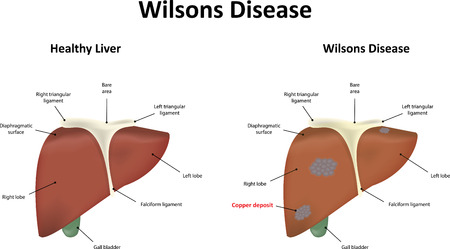Introduction to Car Registration in the UK
Registering a new car in the United Kingdom is a fundamental legal requirement that ensures your vehicle is officially recognised for use on public roads. The process, overseen by the Driver and Vehicle Licensing Agency (DVLA), establishes proof of ownership, links the car to its keeper, and enables proper road tax collection and insurance compliance. For motorists in Britain, understanding the car registration process not only guarantees legal driving but also helps avoid fines and potential complications down the line. Whether you are purchasing from a dealership or importing a vehicle, adhering to these regulations is crucial. This guide provides a comprehensive overview of what registering a new car entails, summarising the key documentation required, associated costs, and common mistakes that could delay your application. By following these steps closely, you can ensure that your experience aligns with British motoring standards and keeps you on the right side of the law.
Essential Documents Required
Registering a new car in the UK requires meticulous attention to paperwork, as missing or incomplete documentation is a common stumbling block for first-time registrants. Below is a detailed breakdown of the essential documents you will need, along with some practical tips to help you navigate British bureaucratic nuances:
| Document | Description | Practical Tips |
|---|---|---|
| V5C Registration Certificate (Logbook) | This official document proves vehicle ownership and must be completed accurately by both buyer and seller. For brand new vehicles, the dealer typically submits this on your behalf. | Double-check all personal details; errors here can cause lengthy delays. If registering privately, ensure all sections are filled out as per DVLA guidelines. |
| Proof of Identity | A valid UK photocard driving licence is preferred. Alternatively, a passport or national identity card may be accepted. | The name must exactly match that on your other documents. Photocopies are usually not accepted—provide originals where possible. |
| Proof of Address | A recent utility bill, council tax statement, or bank statement (dated within the last three months) showing your current UK address. | Digital copies printed at home may be rejected; request official statements when possible. Ensure your address matches that on your proof of identity. |
| Valid Insurance Certificate | You must provide evidence of motor insurance covering the specific vehicle being registered. | If using an electronic insurance certificate, confirm with the DVLA if it’s acceptable or whether a hard copy is needed. |
Additional Considerations for New Car Registrations
For vehicles purchased from an authorised UK dealer, much of the process may be handled on your behalf. However, if importing a vehicle or buying from a private seller, you might also require proof of type approval and evidence of VAT payment. Always retain original receipts and correspondence as supporting documentation.
British Documentation Nuances
The DVLA has strict requirements regarding document authenticity and accuracy. Minor discrepancies, such as nicknames or inconsistent addresses, frequently result in applications being returned. It’s advisable to review all forms thoroughly before submission and use Royal Mail’s tracked services for sending valuable documents.

3. The Registration Process Step-by-Step
Registering a new car in the UK is a straightforward process if you know what to expect and prepare accordingly. The Driver and Vehicle Licensing Agency (DVLA) provides two primary methods for registration: online and by post. Each method has its unique steps and requirements, so it’s crucial to choose the one best suited to your circumstances.
Online Registration via DVLA
The online route is generally faster and more convenient, especially for private buyers who have all required documents at hand. Here’s how the process typically unfolds:
- Gather Required Documents: Ensure you have your V5C/2 (new keeper supplement), proof of identity, proof of address, and details of vehicle insurance and MOT (if applicable).
- Access the DVLA Online Portal: Visit the official DVLA website and navigate to the vehicle registration section.
- Enter Vehicle Details: Input the car’s VIN, make, model, colour, and other requested details exactly as they appear on official documentation.
- Submit Payment: Pay any applicable registration fees securely through the portal.
- Confirmation: Upon successful submission, you’ll receive an email confirmation. The V5C log book will be posted to your registered address within 3–5 working days.
Postal Registration Method
If you prefer or are required to register by post—perhaps due to lacking certain online verification options—follow these steps:
- Complete Form V55/4: This is the application form for registering a new vehicle, available for download from the DVLA website or by request.
- Compile Supporting Documents: Attach proof of identity, address, insurance certificate, new car invoice, type approval certificate, and payment cheque or postal order for fees.
- Post Your Application: Send everything to DVLA, Swansea SA99 1BE.
- Await Confirmation: Processing usually takes up to six weeks. Once approved, you’ll receive your V5C log book in the post.
Comparison of Online vs Postal Registration
| Aspect | Online Registration | Postal Registration |
|---|---|---|
| Processing Time | 3–5 working days | Up to 6 weeks |
| Payment Method | Debit/Credit Card | Cheque/Postal Order |
| User Suitability | Private buyers with full documentation | Those needing paper forms or without full online access |
| Email Confirmation | Yes | No (postal notification only) |
What to Expect During Each Stage
No matter which method you choose, ensure that all information provided matches exactly across all documents. Any discrepancies can lead to delays or rejection of your application. If registering online, keep an eye on your inbox (and junk folder) for confirmations or requests for further information from DVLA. For postal applications, retain copies of all documents sent and consider using tracked postage for peace of mind.
4. Costs and Fees Involved
Registering a new car in the UK is not simply a matter of paperwork—it comes with a suite of fees that can vary based on factors such as vehicle type, emissions, and your location. Here’s a breakdown and analysis of the main costs you should anticipate, as well as insight into how these are managed across the country.
Registration Fee
The primary fee is the one-off first registration charge, currently set at £55 (as of 2024). This fee is payable to the DVLA when you register your vehicle for the first time. Whether you’re purchasing through a dealership or privately importing your car, this charge remains consistent nationwide.
Vehicle Excise Duty (Road Tax)
Road tax, officially known as Vehicle Excise Duty (VED), is another significant cost. The initial rate depends largely on the car’s CO₂ emissions and its list price. For reference, see the table below:
| CO₂ Emissions (g/km) | First-Year Rate (£) |
|---|---|
| 0 | £0 |
| 1-50 | £10–£30 |
| 51–75 | £30–£130 |
| 76–150 | £130–£220 |
| 151–170 | £585 |
| 171–190 | £945 |
| 191–225 | £1,420 |
| 226–255 | £2,015 |
| >255 | £2,365 |
If your new car has a list price above £40,000, an additional supplement of £390 per year applies for five years after the first registration. It’s worth noting that electric vehicles are exempt from both VED and this luxury supplement (at least until current government plans change).
Potential Hidden Costs
- Number Plates: While dealers often include these in the purchase price, if you’re registering independently or importing, expect to pay £20–£50 for standard plates.
- MOT Test Fees: Not applicable for brand-new vehicles up to three years old but relevant for imported used cars.
- P11D Value Processing: If you’re registering as a company car, there may be administrative charges related to benefit-in-kind tax calculations.
- Personalised Registration: Securing a custom number plate incurs additional fees, starting from £250 upwards.
- Delivery or Handling Charges: Some dealerships might bundle administration or delivery fees into the transaction—always clarify these at point of sale.
How Are These Fees Managed?
Across the UK, most dealerships will handle registration fees and initial road tax on your behalf, rolling them into your invoice. However, if you are self-registering or importing a vehicle yourself (common among enthusiasts and those seeking specific models), you’ll need to pay these charges directly via DVLA channels. Always ask for a detailed breakdown of all fees before completing your purchase to avoid unexpected costs down the line.
Performance Analysis
From a consumer perspective, understanding each line item is vital to budgeting accurately. While the headline registration fee remains static across regions, VED and supplementary taxes can add up quickly for higher-emission or luxury vehicles. Moreover, hidden costs—often overlooked in casual transactions—can make a noticeable difference to your total outlay. Therefore, meticulous attention to every stage of the process is recommended to ensure transparency and compliance.
5. Common Mistakes and How to Avoid Them
Registering a new car in the UK is a process many assume will be straightforward, but frequent pitfalls can delay your V5C logbook, cost you extra fees, or even result in legal headaches. Here, we provide a performance-oriented critique of the most common mistakes, with actionable advice rooted in everyday British experience.
Paperwork Errors: The Devil is in the Detail
One of the most prevalent issues is incorrectly filled forms—particularly the V55/4 application. Simple errors, such as misspelling the owner’s name or incorrect address details, are surprisingly common and often cause unnecessary delays. Many motorists also neglect to include all required supporting documents (proof of identity, proof of address, certificate of insurance), which leads to rejected applications.
| Common Paperwork Errors | Impact | How to Avoid |
|---|---|---|
| Misspelled information on V55/4 | Delays processing; possible reapplication needed | Double-check every field before submission |
| Missing supporting documents | Application returned unprocessed | Use DVLAs checklist; organise docs beforehand |
| Incorrect payment method or fee amount | Payment rejected; registration stalled | Verify current fee and accepted methods via gov.uk |
Poor Timing: Missing Deadlines and Late Submissions
The UK’s system expects prompt action. Many first-time registrants underestimate processing times—often up to six weeks. Attempting to drive before official registration is complete can lead to fines or invalid insurance claims. Another common pitfall is failing to register within stipulated periods after purchase, risking penalty charges.
Top Tips for Timely Registration:
- Apply immediately after purchase: The sooner you start, the less likely you are to encounter problems if DVLA backlogs occur.
- Track your application: Use Royal Mail Signed For delivery for posted documents and retain receipts as evidence.
- Avoid peak periods: Avoid registering at month-end or after major automotive events when DVLA workloads spike.
Cultural Nuances: Overlooking Local Regulations and Practices
A uniquely British pitfall is assuming rules mirror those in other countries. For example, some believe temporary plates used abroad are valid here—when in fact, UK law requires proper number plates fitted from day one. Additionally, omitting road tax payment during registration is a classic error; driving without tax is heavily penalised by ANPR systems nationwide.
Performance Summary:
- Diligence pays off: Meticulously completed paperwork and timely submissions result in smoother registration experiences—a hallmark of savvy British motorists.
- Cultural awareness matters: Understanding local nuances ensures compliance and protects against unnecessary fines or delays.
- Plan ahead: With the right preparation, new car registration can be stress-free and efficient, letting you enjoy your new vehicle without administrative setbacks.
6. Final Tips for a Smooth Registration
Successfully registering a new car in the UK requires not only gathering the correct documentation but also understanding local nuances that can either expedite or hinder the process. Below, we offer expert recommendations to help you navigate the system efficiently and ensure full compliance with UK regulations.
Stay Organised and Double-Check Documents
One of the most common pitfalls is submitting incomplete or inaccurate paperwork. Before attending your local DVLA office or posting your application, verify that every required document is present, correctly filled out, and legible. Missing signatures or mismatched details are frequent causes of delays.
Essential Document Checklist
| Document | Purpose | Common Mistake |
|---|---|---|
| V55/4 Form | Main registration application | Incorrect or missing fields |
| Proof of ID & Address | Identity verification | Outdated utility bills or expired passport |
| Certificate of Insurance | Legal requirement for road use | Name mismatch with applicant |
| Proof of Vehicle Purchase (Invoice/Bill of Sale) | Ownership validation | Lack of seller’s signature or date |
| Type Approval Certificate (if required) | Compliance confirmation for imports/new models | Missing on parallel imports |
Pay Fees Promptly and Use Correct Channels
The DVLA offers various payment methods, but paying online or via postal order is generally faster than cheque. Always confirm current fees on the official DVLA website to avoid underpayment, which can result in processing delays.
Avoid Peak Periods and Plan Ahead
If possible, schedule your registration outside peak months such as March and September when new plate releases create a surge in applications. Early morning visits to DVLA offices or prompt postal submissions also tend to yield quicker results.
Track Your Application and Retain Copies
Always keep copies of all submitted documents and note any reference numbers provided. If applying by post, consider using recorded delivery for tracking purposes. The DVLA typically processes registrations within 4–6 weeks; if you have not received confirmation after this period, follow up promptly with your reference details at hand.
Locally Relevant Advice: Engaging Dealers and Using Authorised Agents
If buying from a main dealer, they will often handle first registration on your behalf—a significant time-saver. For imported vehicles or more complex cases, consider using an authorised agent familiar with UK-specific compliance requirements. These professionals can help preempt issues, especially regarding emissions standards or type approval documentation.
The Bottom Line: Full Compliance Equals Peace of Mind
A methodical approach—combining document diligence, timely payments, and awareness of local procedures—will ensure that your new car registration process proceeds without unnecessary complications. Staying informed about regulatory updates via the official GOV.UK portal is always advisable for up-to-date guidance specific to England, Scotland, Wales, and Northern Ireland.

